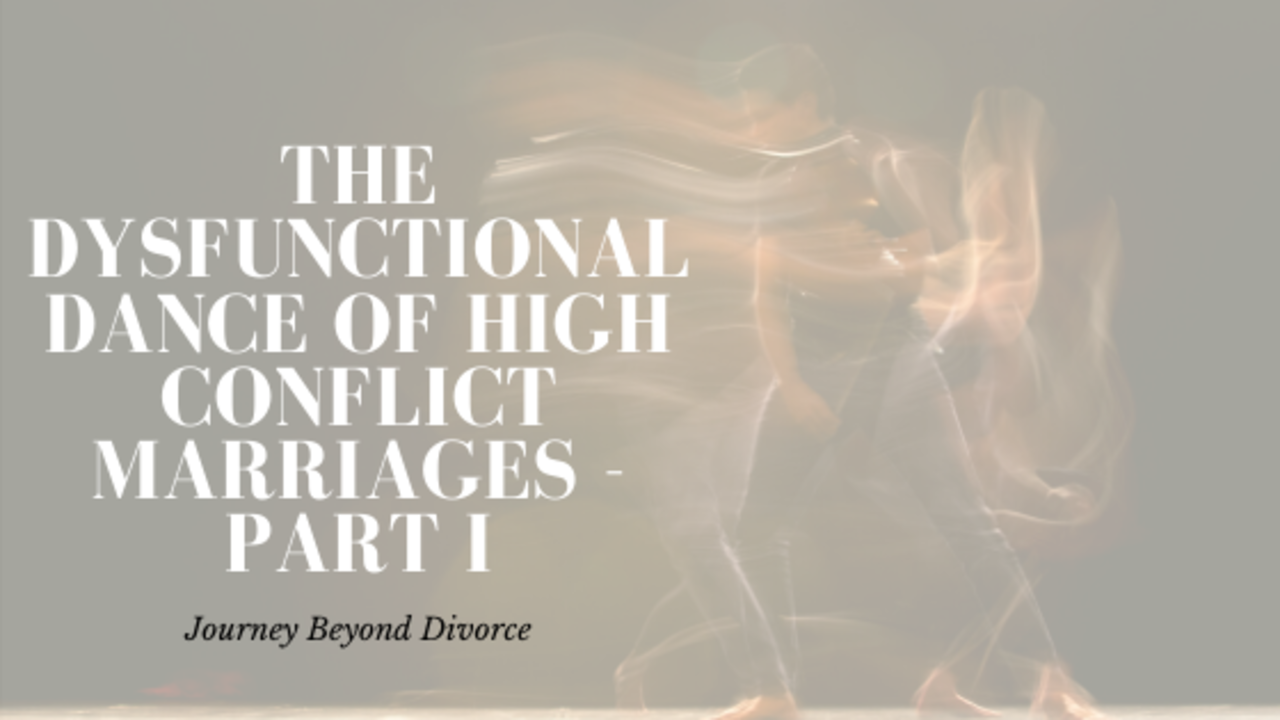
The Dysfunctional Dance of High Conflict Marriages - Part I
Aug 16, 2020Karen McMahon
If you are married to and trying to divorce a pathological narcissist it is crucial that you understand the underlying psychology of both your behavior and the behavior of your spouse. There is a considerable amount of guilt and shame for those who get caught in the narcissist’s snare. With understanding you discover that while you are responsible for marrying your spouse you are not and never have been responsible for the breakdown of your marriage. This discovery allows you to let go of self-blame and condemnation. The roots of both pathological narcissism and codependency go way back for both of you, long before you met. Your history predisposed you to fall in love with a narcissist. Understanding the dynamic between the two of you is a giant step towards breaking free.
The Narcissist:
According to Ross Rosenberg, author of ‘The Human Magnet Syndrome”, there are three psychological disorders that have an extreme narcissist core: narcissistic, antisocial, and borderline personality disorders. This core presents as self absorbed, self centered, entitled, manipulative, harsh, judgemental, self promoting, and blind to any part he/she plays in the many issues that inevitably arise in such relationships.
Narcissists and codependents are polar opposites. Their attraction to each other is magnetic. Narcissists present as fun, lively, self confident and self-assured. Codependents enjoy feeling loved by and being useful to extraordinary people. The codependent subjugates his/her needs to the extraordinary person and in doing so, sacrifices his/her individuality.
The narcissist surrounds him/herself with status symbols to reinforce a facade of specialness: the impressive position or success at work, the high end automobiles, the enviable vacations, the good looking significant other, and eventually, the high achieving children. Initially the narcissist appears seductively successful, fun, and interesting. What isn’t obvious is that the narcissist, like a leech, needs others to buy into the image he/she projects in order to maintain a fragile ego. Of course, it’s easy to buy into the narcissists image and the attention and adulation he/she initially showers on his/her prey until the seduction is complete. Once this occurs the “honeymoon phase” of the relationship begins to fade.
Once past the “honeymoon phase” the consistent adulation and attention disappear and the relationship begins it’s slow, confusing, and painful dissolution. He/she goes from being the love of your life to a selfish, manipulative, deceitful, and consistently critical partner. The shift is devastating.
Perhaps this dynamic has happened to you in more than one relationship. You find yourself asking, “why does this keep happening to me?”
It doesn’t ‘happen’ to you. Unknowingly you are attracting this type of individual due to your ‘predisposition’ as a codependent. Engaging with your narcissist again and again in similar ways is part of your dysfunction. After months, years, or decades of him/her not hearing or considering your perspective, you still try. You tie yourself in a pretzel trying to control the narcissist and the outcome, to no avail. Changing this behavior is your ticket to healing and.
The Codependent - the polar opposite of the narcissist.
Codependents are innocent individuals that are unknowingly suffering from a “self love deficiency”. A self love deficiency comes from being raised in a family with narcissistic and/or codependent parents that ultimately shame a child to his/her core. It can also come from having lost a parent or some other family trauma that required the child to take on too much far too early, thereby surrendering innocence for responsibility. Either way, the ultimate damage to the child is a deep black core of feeling unworthy.
As the child matures it holds on to an unhealthy dependency on anyone who makes that core shame less painful, someone who fills that darkness with some light. The child develops with pride in how caring and helpful he/she can be. The child’s sense of worth into adulthood is how useful they can be to others. Being a caring and helpful person is not a bad thing in and of itself unless there is such a strong desire to care for others that personal needs are ignored or denied on a regular basis. Without a significant awareness and attention to oneself that individual will not be able to develop a solid foundation. Without that foundation relationships are more like addictions than freely chosen partnerships.
Interested in reading Part Two?
Click HERE!
Feeling stuck or overwhelmed?
Let’s dive into your unique challenges and create a personalized plan to help you move forward.
This FREE rapid relief call call is your chance to experience the powerful transformation coaching can bring to your life and future!

